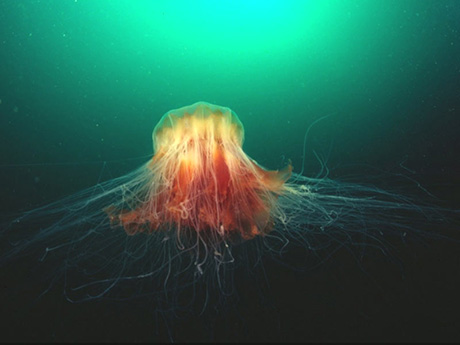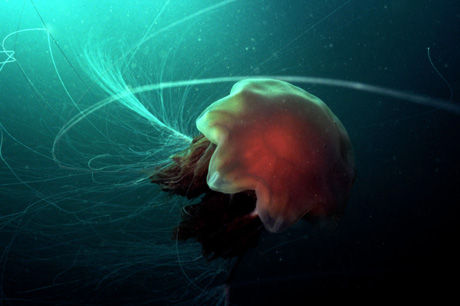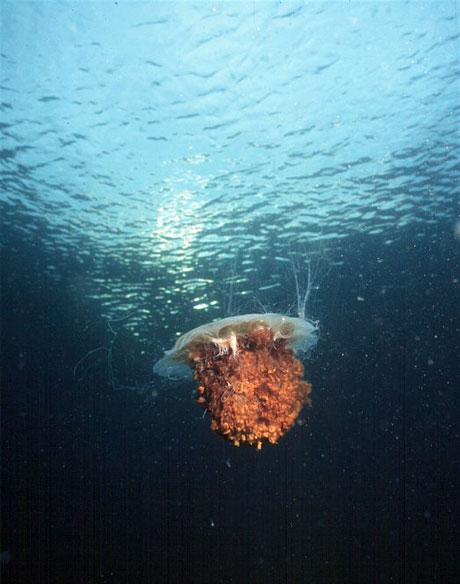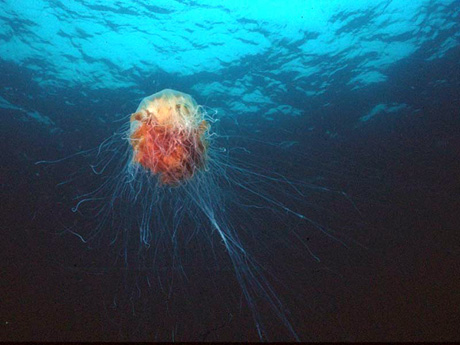

16 January 2022
With tentacles up to three metres long and covered with stinging cells, it's better not to get too close to the Lion's Mane jellyfish. It's body can be 2 metres across, making it one of the largest species of jellyfish.

Lion's Mane Jellyfish, Cyanea capillata
The tentacles are arranged in eight bunches, with each bunch containing over 100 tentacles. The oldest tentacles are often coloured dark red. They have a very severe sting that can produce blisters, irritation and muscular cramp and may even affect respiratory and heart function. Fragments of tentacles, left on buoy ropes for example, retain their stinging power.
Don't rinse with seawater

Starting out life in late winter as a small member of the plankton, not more than a few centimetres across, in just a few months the Lion's Mane achieves its tremendous size. It lives for only one year.
The Lion's Mane occasionally occurs in large swarms, largely thought to be due to storms and tides that concentrate individuals together. They don't just float with the currents though but swim by contracting their muscles and propelling themselves forward.

The jellyfish are predators, eating zooplankton, small fish and moon jellyfish.
You'll find the Lion's Mane in the Arctic and Pacific Oceans, the North and Irish Seas and around the coast of Australia. They are mostly no deeper than around 20 metres.

Phylum: Cnidaria > Class: Scyphozoa > Order: Semaeostomeae > Family: Cyaneidae > Species: Cyanea capillata
Photo copyright Tim Nicholson. Photos may be re-used but the photographer and this web site must both be credited. Higher resolution photographs are available.
by Jill Studholme
References and Further Reading
Great British Marine Animals, by Paul Naylor
The Marine Life Information Network
Doyle, T.K.; Headlam, J.L.; Wilcox, C.L.; MacLoughlin, E.; Yanagihara, A.A. Evaluation of Cyanea capillata Sting Management Protocols Using Ex Vivo and In Vitro Envenomation Models. Toxins 2017, 9, 215. https://doi.org/10.3390/toxins9070215